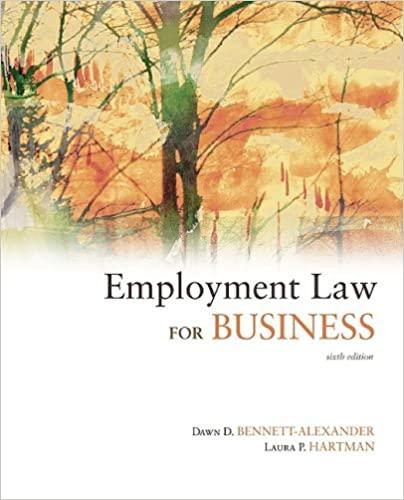Question
In 1992 a baboon was killed as the source of a liver for transplantation to a person in chronic liver failure, despite public outcry from
In 1992 a baboon was killed as the source of a liver for transplantation to a person in chronic liver failure, despite public outcry from animal rights advocates. The human recipient lived for 10 weeks before dying of a brain hemorrhage, thought to be unrelated to the transplantation. Baboons are highly intelligent, social creatures. They are not endangered or threatened species, and are killed as agricultural pests in parts of Africa. They are bred in small numbers in the southern United States for research. Baboons are attractive as organ donors for their size, the fact that they can be screened for infections that could be passed to the human recipient, and the fact that they (and presumably, their transplanted livers) will not acquire infections with the human hepatitis viruses that often lead to chronic liver failure in human patients. Other species (primates or otherwise) may prove preferable for some other organs, especially for tiny human infants. It is possible that in the future, farmed baboons (or other donor species) could be genetically or otherwise manipulated to make animal-to-human transplants safer and less prone to graft rejection than human-to-human transplants. Obviously, timing would be simpler than waiting for an appropriate human donor to die of natural or accidental causes.
What criteria are most important to you in deciding whether attempts at animal-to-human transplantation should be continued? What criteria would need to be met to make you allow this?
Are there people who should not qualify to be the beneficiaries of such a program, such as:
- Individuals who are very old, or for whom the operation is highly unlikely to succeed
- People (such as smokers, IV drug users, careless drivers, etc.) who may have brought their condition upon themselves?
How does the fact that no one knew how successful this would be affect your decision on whether or not you would allow it? Is there any real difference between using primates for basic research and using them as organ donors?
Step by Step Solution
3.48 Rating (151 Votes )
There are 3 Steps involved in it
Step: 1
Deciding whether attempts at animaltohuman transplantation should be continued involves careful consideration of ethical scientific and practical fact...
Get Instant Access to Expert-Tailored Solutions
See step-by-step solutions with expert insights and AI powered tools for academic success
Step: 2

Step: 3

Ace Your Homework with AI
Get the answers you need in no time with our AI-driven, step-by-step assistance
Get Started


